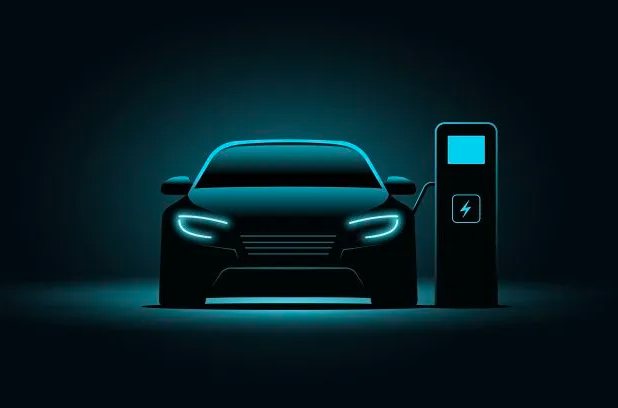Electric Vehicle Adoption: A Bold Move Towards a Cleaner Future

The modern world is shifting gears at an unprecedented pace, and leading this transformation is the electric vehicle. What was once considered a futuristic concept is now a rapidly growing reality on the roads around the globe. From urban centers to suburban streets, the electric vehicle is quietly but powerfully replacing traditional fuel-powered engines.
In the last decade, advancements in clean technology, rising environmental awareness, and supportive policies have propelled the electric vehicle into mainstream conversations and consumer garages. Today, it’s not just a symbol of eco-conscious living — it’s a practical, cost-effective, and innovative transportation solution.
The Rise of the Electric Vehicle: From Novelty to Necessity
The initial launch of electric vehicles (EVs) was met with curiosity and skepticism. Many saw them as experimental, expensive, or suited only for a niche audience. But the story quickly evolved. Driven by the dual pressure of climate change and fossil fuel dependence, automakers began prioritizing EV development.
Startups like Tesla disrupted the space, proving that the electric vehicle could be stylish, fast, and luxurious. Legacy manufacturers such as Ford, BMW, Toyota, and Volkswagen followed suit, announcing electric versions of their most popular models.
By 2030, electric vehicles are projected to make up more than 60% of global car sales, and that number is growing faster in countries with strong sustainability goals.
Why the Electric Vehicle Is Gaining Momentum
Several compelling factors are pushing consumers and industries toward EVs:
1. Environmental Impact
EVs emit no tailpipe pollutants. This results in significantly lower carbon emissions compared to gasoline or diesel vehicles. The shift to electric transportation is crucial in reducing greenhouse gases and combating global warming.
2. Economic Advantages
The cost of owning an electric vehicle has been dropping steadily. Lower fuel costs, reduced maintenance needs, and government incentives make them financially appealing. Batteries — once the most expensive component — have seen a dramatic cost decline over the past decade.
3. Technological Breakthroughs
The modern electric vehicle is powered by smart technology. From advanced driver-assistance systems (ADAS) to connected apps, regenerative braking, and fast charging, EVs are redefining what a car can do.
4. Policy and Regulation
Governments are actively promoting the use of electric vehicles through subsidies, tax breaks, and mandates. In countries like Norway, EVs enjoy road toll exemptions, reduced registration fees, and even access to bus lanes.
See also: Manual vs Automatic Garage Doors: Pros, Cons & Upgrades
Challenges Facing Electric Vehicle Expansion
While the future is bright, several roadblocks remain:
🔌 Charging Accessibility
In rural or developing regions, charging infrastructure is still limited. Ensuring wide coverage is key to broader adoption.
💸 Upfront Costs
Despite incentives, the sticker price of some EVs remains higher than equivalent petrol models, especially in emerging markets.
🔄 Range Anxiety
Many potential buyers worry about how far they can travel on a single charge. Fortunately, newer models are consistently pushing past 300–400 km ranges, addressing this concern.
The EV Boom Across the Globe
- China is the global leader in electric vehicle production and adoption, thanks to aggressive subsidies and a well-developed battery supply chain.
- Europe has set clear emissions targets, with Germany, France, and the UK seeing a surge in EV sales.
- United States is catching up rapidly, with both federal and state-level programs to support the shift to electric vehicles.
Even developing markets in Southeast Asia and South America are beginning to see growth in EV infrastructure and consumer interest.
The Future of Electric Vehicles: What Lies Ahead?
Here’s what we can expect in the coming years:
🌍 Global Electrification of Transport
From passenger cars to buses, trucks, and two-wheelers, the entire transport ecosystem is moving towards electric.
🔋 Breakthroughs in Battery Tech
Solid-state batteries, graphene cells, and other innovations are poised to increase range, reduce charging time, and enhance safety.
🚚 Fleet Electrification
Delivery services, ride-sharing platforms, and logistics companies are adopting electric fleets to cut emissions and costs.
🏭 Green Manufacturing
Sustainable sourcing and recycling of materials will become central to EV production processes, making the entire lifecycle eco-friendly.
🧠 Smart Vehicle Ecosystems
Autonomous features, AI integration, and vehicle-to-grid (V2G) communication will make the electric vehicle part of a smarter, more connected transportation system.
Conclusion: Driving into the Future with the Electric Vehicle
The electric vehicle represents more than just a change in how we fuel our cars — it symbolizes a global shift in how we approach energy, sustainability, and innovation. As barriers to adoption continue to fall and new models enter the market, there’s no doubt that EVs are here to stay.
Whether you’re an individual looking to reduce your carbon footprint, a business seeking fleet solutions, or a policymaker planning the infrastructure of tomorrow, embracing the electric vehicle is a step in the right direction.
Clean, quiet, and connected — the electric vehicle is not only the future of mobility, but the present of progress.
Let me know if you’d like to create a matching article focused on electric vehicle charging infrastructure or explore a comparison between hybrid and electric vehicle technologies. I can also research EV growth trends in a specific country or region if needed.

